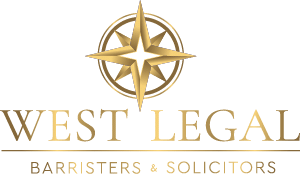Are You Being Harassed or Bullied at Work?
Bullying is often associated with kids, their issues at school or online cyberbullying. Unfortunately, bullying and harassment do not just affect minors. The statistics are showing more and more that adults in the workplace are being subjected to workplace bullying or harassment by co-workers and managers, which in turn has profound effects on not only the employees but the workplace generally. Consequently, this creates significant liability for the employer.
What is Workplace Bullying?
Bullying or harassment is usually seen as acts or verbal comments that could; hurt or isolate a person in the workplace. Sometimes, bullying can involve negative physical contact as well. Bullying usually involves repeated incidents or a pattern of behaviour that is intended to intimidate, offend, isolate, degrade or humiliate a particular person or group of people and has been described as the assertion of power through aggression.
Is Bullying a Workplace Issue?
Absolutely yes! However, it is sometimes hard to know if bullying is happening in the workplace. There is a “fine line” between strong management and bullying but most educated and empathic employers can see the difference. Comments that are objective and are intended to provide constructive feedback are not usually considered bullying, but rather are intended to assist the employee with their work.
Bullying and harassing behaviour do not typically include:
- Expressing differences of opinion.
- Offering constructive feedback, guidance, or advice about work-related behaviour.
- Reasonable action taken by an employer or supervisor relating to the management and direction of workers or the place of employment (e.g., managing a worker’s performance, taking reasonable disciplinary actions, assigning work).
What are Examples of Bullying or Harassment?
While bullying is a form of aggression, the actions can be both obvious but most often subtle and underhanded. It is important to note that the following is not a checklist, nor does it mention all forms of bullying. This list is included as a way of showing some of the ways bullying may happen in the workplace. Also, remember that bullying is usually considered to be a pattern of behaviour where one or more incidents will help show that bullying is taking place.
Examples include:
- Spreading rumours, gossip, or innuendo.
- Criticizing a person persistently or constantly.
- Excluding someone socially.
- Intimidating a person either physically or mentally or professionally.
- Undermining or deliberately impeding a person's work.
- Physically abusing or threatening abuse.
- Removing areas of responsibilities without cause.
- Constantly changing work guidelines so the employee can never reach a goal.
- Establishing impossible deadlines that will set the worker up to fail.
- Withholding necessary information or purposefully giving the wrong information.
- Making jokes in person or online that are ‘obviously offensive’ or inappropriate.
- Assigning unreasonable duties or workload which are unfavourable to one person
- Yelling or using profanity
- Belittling a person’s opinions whether in person or in public
- Belittling a person’s appearance for any reason
- Unwarranted (or undeserved) punishment
- Impeding applications for promotions
How can Bullying Affect an Employee?
People who are the targets of bullying may experience a range of effects. These reactions include:
- Lack of desire to be at work
- Shock
- Anger
- Feelings of frustration and/or helplessness
- Increased sense of vulnerability
- Loss of confidence
- Physical symptoms such as:
- Inability to sleep
- Loss of appetite
- Depression
- Anxiety disorder
- Psychosomatic symptoms such as:
- Stomach pains
- Headaches
- Panic or anxiety, especially about going to work
- Family tension and stress
- Inability to concentrate and low productivity
How can Bullying Affect the Workplace?
Bullying and harassment affect the whole organization on many levels.
The effects can include:
- Increased absenteeism, sick leaves, WCB claims and/or short term and long term disability claims.
- Increased turnover either due to resignations, terminations.
- Increased stress and workloads for other co-workers
- Increased costs for employee assistance programs (EAPs), recruitment, etc.
- Increased risk for accidents / incidents and civil liability flowing therefrom
- Decreased productivity and motivation.
- Decreased morale for whole workforce if bullying is not being dealt with by management
- Reduced corporate image and customer confidence
Are there any Laws Addressing Bullying in the Workplace in Canada?
The Occupational Health and Safety Act in Alberta requires an employer to have an OHS policy, and conduct a workplace violence risk assessment with its employees and contractors. If any risks are identified, the employer must put a plan into place that will mitigate those workplace risks.
Alberta’s OHS legislation also includes somewhat new requirements to help prevent workplace harassment and violence and address incidents when they do occur. Under the OHS legislation, every employer must develop and implement a harassment prevention plan and violence prevention plan at the workplace. The plans must be in writing and readily available for reference by workers at the worksite. Both paper and digital formats are acceptable. A harassment prevention plan must include a harassment prevention policy and prevention procedures. A violence prevention plan must include a violence prevention policy and violence prevention procedures.
If the bullying is focused on gender, ethnicity, disability, age, religion or marital status, the victim may also be protected under the Alberta Human Rights Act and can file a complaint of discrimination against the employer and the harasser individually.
What Can an Employer Do?
All employers need to commit to a respectful, harassment-free workplace. Employers must update their current harassment policies and /or develop new harassment, workplace violence or anti-bullying policies and educate their workforce on such policies. After doing that, enforcement of those policies is critical to maintaining a safe work environment and reducing workplace injuries and liabilities for both employees and the employer.
Consult with an Employment Lawyer
Finally, it’s important for an employer to consult with an employment lawyer to ensure that they are meeting their statutory obligations to provide a safe inclusive work environment. Conversely, an employee should consult with an employment lawyer to see if what they are experiencing could result or lead to a constructive dismissal, disability claim or human rights complaint. Contact our Employment Lawyers today or email knutz@west-legal.ca or kim@sunstonelegal.com directly to discuss your options.

